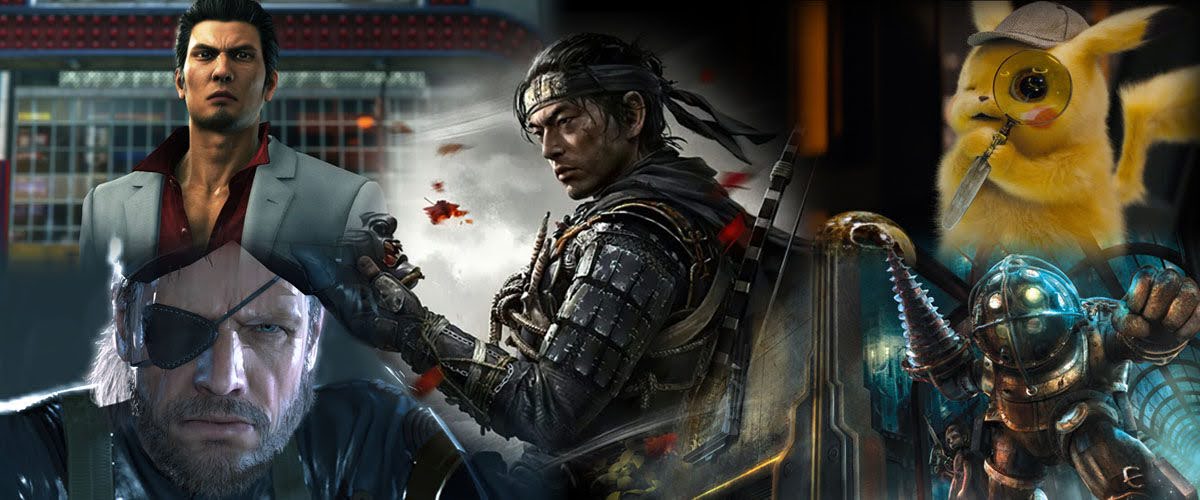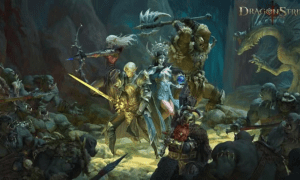Video games have long ceased to be just entertainment. They shape trends, inspire artists, and, of course, influence other forms of art, including cinema. Modern films increasingly use visual, narrative, and even mechanical techniques borrowed from games. This process has become especially noticeable in recent decades as gaming technology has advanced significantly. Let’s explore how video games have influenced contemporary cinema.
Visual Style and Technology
One of the most significant contributions of video games to cinema has been the advancement of graphics and special effects. Modern games have reached such a level of detail that their worlds are sometimes difficult to distinguish from real filming locations. Cyberpunk 2077, Horizon Forbidden West, and Death Stranding showcase a cinematic approach to visual design, featuring photorealistic landscapes, detailed character models, and complex lighting effects that enhance immersion.
These technologies are increasingly applied in the film industry. Many CGI-heavy films now use game engines for photorealistic scenes. A prime example is The Mandalorian, where virtual production replaces traditional green screens with massive LED panels generating real-time digital backgrounds. Similar techniques are also used in gaming broadcasts to enhance immersion. For instance, valorant tournament employs virtual production, transforming it into a visually striking event comparable to large-scale cinematic productions. These methods, similar to Unreal Engine, allow directors to control lighting, perspective, and aesthetics directly on set.
The gaming and film industries are collaborating more closely. Game studios contribute their technologies to Hollywood productions, with Epic Games and Unreal Engine playing a key role in The Matrix Resurrections, enabling directors to work with virtual scenes before filming. This not only cuts costs but also allows greater creative experimentation, making previously impossible scenes a reality.
Video games have also influenced cinematography, with many films adopting camera techniques inspired by games: sharp panoramas, dynamic angle shifts, and long continuous takes that create a seamless visual flow. This is particularly evident in Kingsman: The Secret Service, where cinematography mirrors third-person action game perspectives. In this way, games not only inspire cinema visually but also reshape the filmmaking process itself.
Narrative and Story Structure
Games have transformed cinematic storytelling, encouraging nonlinear narratives, event variability, and deeper audience engagement. Video games often give players choices that shape the plot, influencing films with multiple storylines, time loops, and unpredictable twists.
For example, Tenet by Christopher Nolan mirrors complex game mechanics, where characters manipulate time much like players navigating different temporal states in The Stanley Parable or Bioshock Infinite. Similarly, Blade Runner 2049 adopts a meditative, immersive storytelling approach, reminiscent of open-world games like Red Dead Redemption 2 or Death Stranding, where the environment plays as crucial a role as the characters.
Even action films reflect gaming influences. John Wick features highly choreographed combat, where precise movements, tactical positioning, and fluid pacing resemble action games like Max Payne or Splinter Cell. The way fight sequences are framed and shot often mimics the cinematic presentation of AAA games.
Modern directors increasingly integrate game-like storytelling techniques, making films feel more interactive, even if viewers remain passive. The continued borrowing of gaming elements underscores how deeply video games have influenced contemporary film narratives.
Influence on Action and Cinematography
Modern action films frequently borrow from video games, adopting dynamic movement and structured combat sequences to enhance immersion. For example, Kingsman: The Secret Service features a continuous-shot church fight, resembling in-game sequences where the camera fluidly follows the character.
This influence is most evident in Hardcore Henry, a film shot entirely from a first-person perspective, mimicking FPS games like DOOM and Call of Duty. It integrates game mechanics such as weapon switching, fast movement, and parkour, reinforcing the interactive feel.
Beyond first-person films, action movies incorporate gaming principles in fight choreography. John Wick employs strategic combat, with precise shots and calculated movement reminiscent of tactical shooters. The smooth camera work mirrors cinematic cutscenes in AAA games.
Comic book adaptations also embrace gaming-inspired action. Deadpool, Suicide Squad, and The Avengers feature fight sequences with precise attacks, dodges, and combo moves, resembling cooperative multiplayer battles. The dynamic camerawork enhances the real-time gaming effect, further blurring the line between films and video games.
Video Game Adaptations in Cinema

If video game adaptations were once considered risky projects that rarely met expectations, today the situation has changed. In the past, many films based on games faced criticism for their shallow approach to the source material and weak scripts. However, as the industry has grown and the importance of gaming heritage has been recognized, cinema has begun adapting video games with much greater respect and attention to detail.
A prime example of a successful adaptation is HBO’s The Last of Us. The series not only captured the atmosphere of the original game but also significantly expanded its universe, deepening character development. Unlike many previous adaptation attempts, the game’s developers were directly involved in crafting the script, which helped preserve the essence of the story. The success of this project demonstrated that video games could serve as the foundation for high-quality dramatic series capable of engaging even those who have never played the original.
Not only serious projects have proven the viability of video game adaptations. Films like Sonic the Hedgehog, Detective Pikachu, and The Super Mario Bros. Movie managed to strike a balance between fan service and accessibility for a broad audience. They retained the visual style and personalities of the characters while adapting them in a way that appealed to both dedicated fans and new viewers. This approach makes video game adaptations not just niche projects but full-fledged blockbusters capable of competing with classic animated and adventure films.
Studios have also begun involving game developers more frequently in the filmmaking process, helping to maintain the authenticity of the story and visual style. For example, Mortal Kombat (2021) was well-received by fans due to its faithful recreation of the game’s mechanics. The film retained iconic Fatalities, and the fight choreography was designed to resemble the in-game experience. This is a rare case where an adaptation did not attempt to reinvent the source material but instead honored it to the fullest extent.
Conclusion
Video games have had a significant impact on modern cinema—from filming technologies to narrative structures and action scene styles. They have set new storytelling standards, popularized complex narratives and nonlinearity, and transformed the approach to action sequences. In turn, cinema also influences games, creating a unique symbiosis between the two art forms. Whereas the boundary between them was once clearly defined, today we see it gradually disappearing.



































